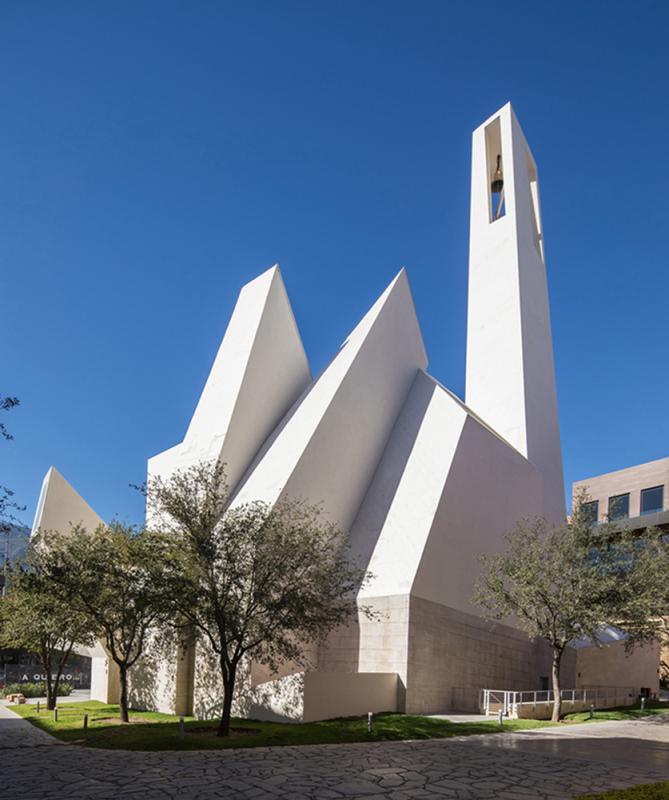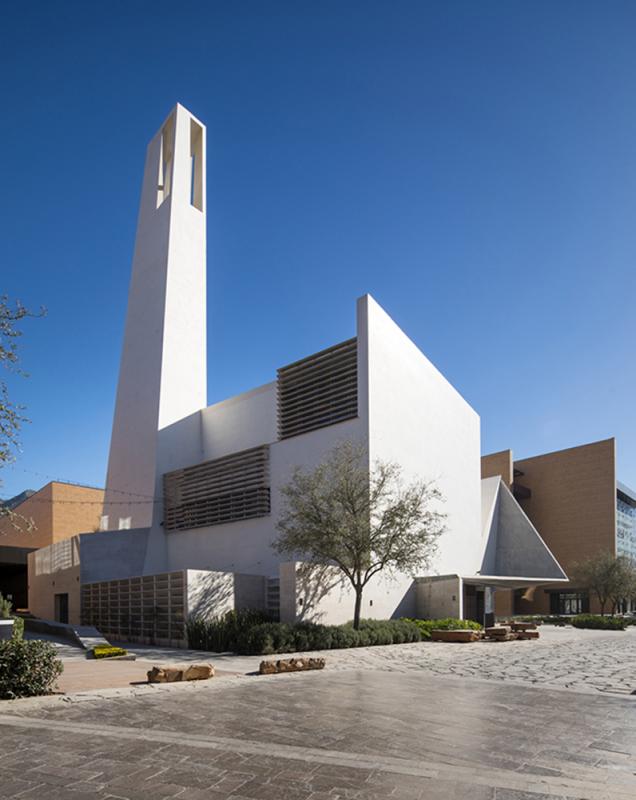Parish Church in Pueblo Serena
The church’s main entry opens right onto a plaza, which functions as an annex to the church. Above the entry canopy, the façade is a large flat wall, an emphatic and square plane, declarative of the otherness of the space within: the sacred space of the church interior. The spaces of the temple represent the development of an architectural language with a long history, speaking of continuity but also renewal. The volumetric concept of the church derives from traditional church plans, and the design presents recognizable architectural features taken from early Christian temple prototypes, such as the bell tower, the stained-glass windows, the frontal altar, the baptistery, the choir, the three chapels and the lateral courtyard. The plan is that of a basilica, with a rectangular central nave some 15 meters high. Behind the baptistery a long glass wall runs the length of the nave giving views of an enclosed patio. Above this area is a version of a rose window. To the southeast, three small chapels each enjoy daylight from high skylights. Finally, above the altar is a forth skylight, whose light washes down behind an inclined panel cut into four sections to reveal a large Latin cross.
![[Moneo Brock - Parish Church in Pueblo Serena - COVER IMG]](https://architectureprizecom.s3-us-west-2.amazonaws.com/uploads/90006/large_1501149337.jpg)



